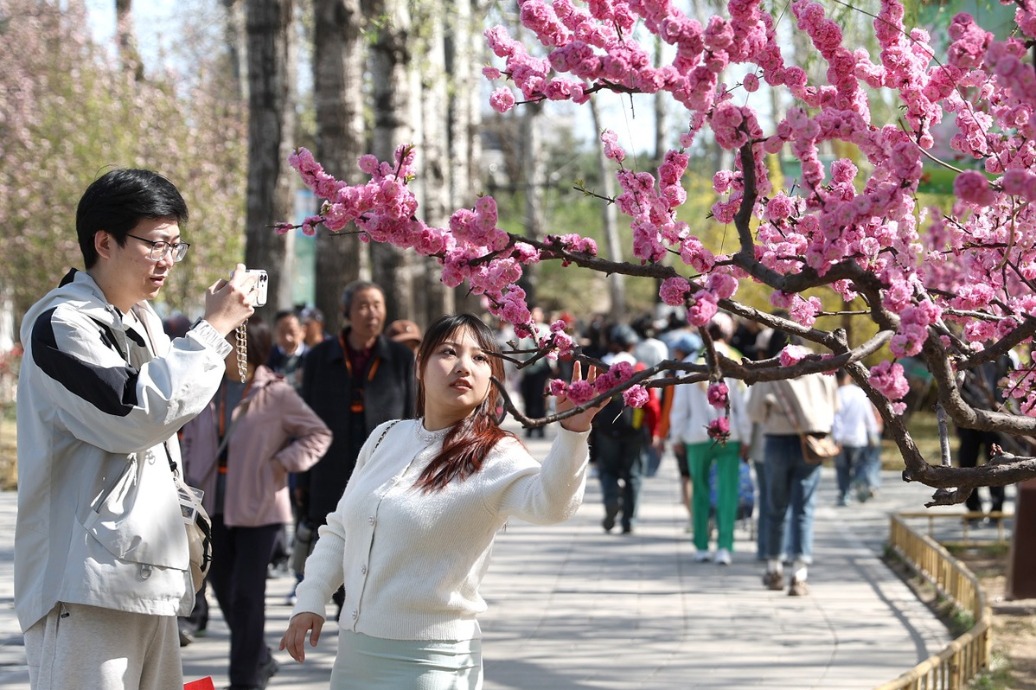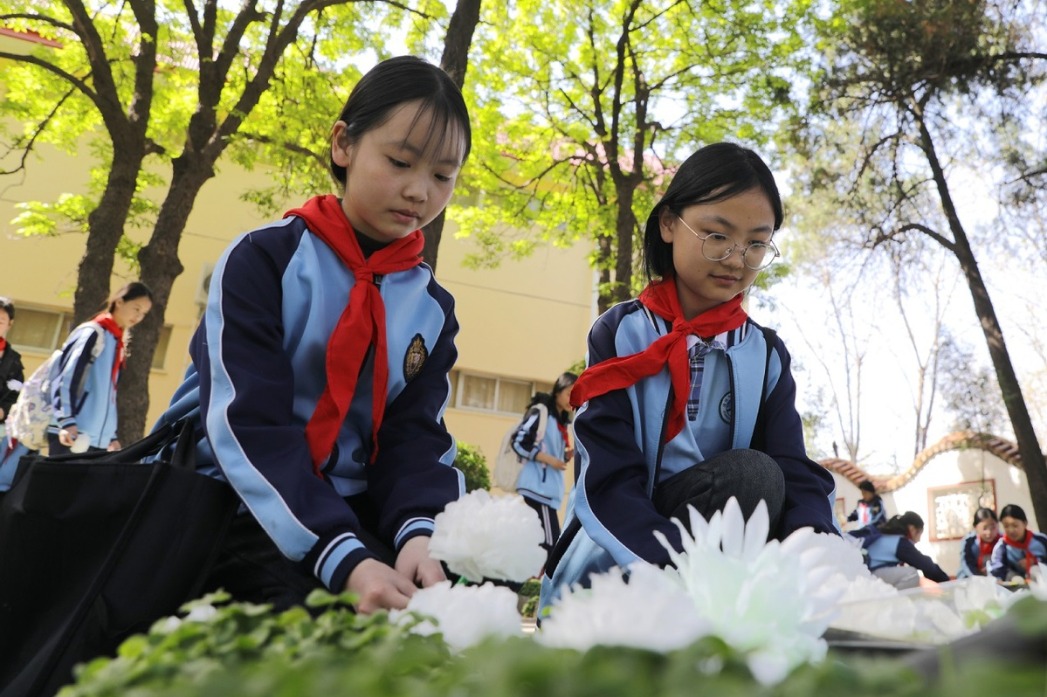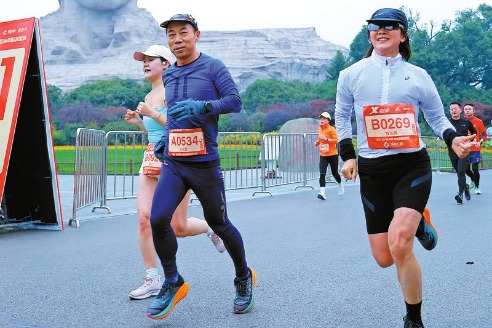More incentives urged to tackle pollution


Experts have called on the government to strengthen pollution detection capabilities and introduce more incentives to help tackle increasing ozone pollution in China.
The authorities recently committed to concerted efforts to control polluting gas and PM2.5 particulate matter in the next five years.
But controlling ozone will be more challenging than recent successful efforts to rein in PM2.5, they said, because it is formed in complicated chemical reactions involving pollutants from a variety of sources, many of which are invisible and odorless.
The Fifth Plenary Session of the 19th Central Committee of the Communist Party of China in October called for efforts to align the control of ozone and fine particulate matter during the 14th Five-Year Plan (2021-25) period in order to essentially eliminate days with heavy air pollution.
"The air pollution control situation in China has experienced a quiet change," said Li Tianwei, a senior official at the Ministry of Ecology and Environment's Bureau of Ecological and Environmental Enforcement. "The most outstanding example is that the components of air pollution have become markedly different.
"With the density of fine particulate matter going down, the contribution of fine particulate matter to air pollution has been smaller. The effect of ozone, however, is increasing."
The ministry says that while the average density of other major air pollutants either fell or was stable in the 337 major cities across the country last year, ozone levels rose 6.5 percent year-on-year to 148 micrograms per cubic meter.
Li said ozone has replaced PM2.5 as the biggest contributor to air pollution in the Beijing-Tianjin-Hebei province cluster and the Yangtze River Delta, two key regions for air pollution control in the country.
This summer, a special campaign organized by the ministry on controlling emissions of volatile organic compounds revealed "a very grim situation", he said. Sunlight and high temperatures can trigger chemical reactions between VOCs and oxynitrides that lead to the formation of ozone.
While the ozone layer helps to shield Earth from harmful ultraviolet radiation, even relatively low amounts of the gas can cause lung damage and result in shortness of breath.
One problem revealed in the campaign is that local governments and businesses do not understand the urgent need to control emissions of VOCs, Li said.
"VOC control has yet to be put at the top of many local governments' agendas," he said.
VOCs include a variety of chemicals that pose health hazards, including eye, nose and throat irritation, shortness of breath, headaches and dizziness.
They can be emitted when fuel is burned and also occur in a range of everyday products. For example, they can help enhance the colorfastness and durability of paints. Low-VOC paints are available, but are usually much more expensive.
Last year, the Ministry of Ecology and Environment published standards on fugitive emissions of VOCs in the pharmaceutical and paint industries-those released from pressurized equipment due to leaks and other unintended or irregular releases-but Li said the campaign revealed that some companies' environmental protection executives and leading managers knew nothing about them.
Although some companies installed facilities to control emissions of VOCs, they didn't pay much attention to their performance.
Another challenge for VOC governance comes from the inadequate detection capabilities in many regions. Many local environmental authorities, even some in developed regions, do not have any facilities capable of detecting VOCs, Li said.
While some authorities turned to detection companies for help, such enterprises were not well supervised, he said, and there were problems with results being falsified.
But what makes VOC control really complicated, Li said, is that VOCs can be found in over 460 industrial sectors, many directly related to people's daily lives, including furniture, painting, packaging and some chemical industries.
Zhang Xinmin, a researcher at the Chinese Research Academy of Environmental Sciences, said that unlike many other major air pollutants, ozone is usually formed by chemical reactions rather than being directly emitted into the air. That means different ozone pollution events can have different causes.
She said that in addition to the approximately 28 million metric tons of VOC emissions in China each year caused by human factors, there were also about 36 million tons of emissions from nature. VOC contributions from nature vary in different places, as do the components of the compounds.
She also called for more research and development on producing VOC detection apparatus in China because most of the high-quality devices used at present are imported.
Li said the country should intensify efforts to develop and promote products that release only low amounts of VOCs as it ratchets up ozone pollution control in the next five years.
He also urged the government to introduce economic incentives to encourage enterprises to install VOC-collection facilities, saying that such incentives have proved effective in reducing sulfur dioxide emissions from coal-fired power plants.
In 2007, authorities introduced a policy that allowed coal-fired power plants that had installed desulfurization facilities to earn an extra 0.015 yuan (0.0023 US cents) for every kilowatt-hour of electricity they generated.
"Many plants soon installed the facilities," he said. "The incentive helped generate the driving force for companies to do the work, and it also saved environmental authorities from frequent visits to plants to urge them to rein in emissions."




































